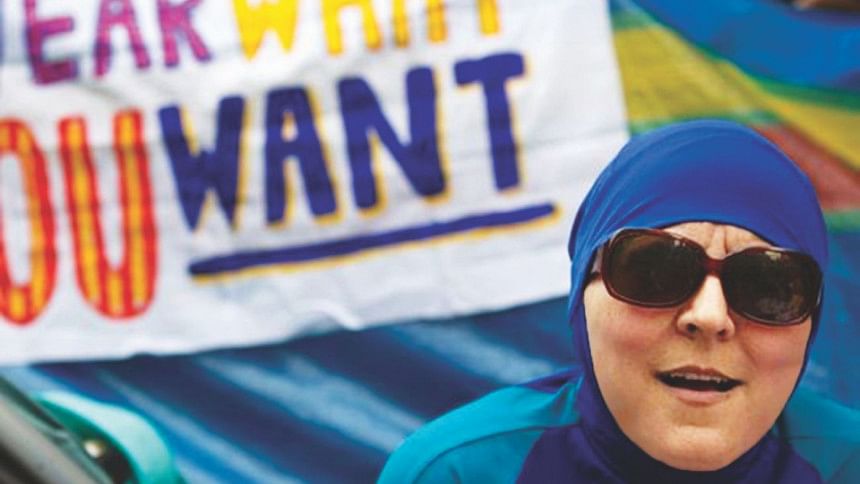The politics of seclusion

Discussions on the veil in Bangladesh should not ignore the writings of Begum Rokeya. She is one of the most prominent Bengali Muslim women's rights activists in the Indian subcontinent who spoke vehemently against seclusion of Muslim women in India. Readers should keep in mind that she was against seclusion not veil or parda. She wrote a book called "Oborodhbashini" which means women who live within confinement. With her tongue in cheek writing style she portrayed the ridiculousness and horrors of seclusion women were subjected to. In support of her argument many women's rights activists argued that the type of seclusion system practiced in India was not prevalent in any other Islamic countries. Hence the practice is not authentic Islamic practice as it was deemed at that time.
A lot has changed since Begum Rokeya wrote Oborodhbashini. Among many militants, who are the self proclaimed harbingers of 'authentic' Islam, seclusion is mandatory. In cities that are ISIS strongholds women who do not follow their guidelines regarding dress codes and seclusion face stringent punishment. There have been cases of disfigurement by acid throwing and stoning to death of women found not following the stipulated dress codes. Western middle-class white feminists have been criticised heavily for using these Muslim women's victimhood in justifying imperial invasion in many Middle Eastern Muslim countries.
While these criticisms are valid, there should also not be any denial of the fact that in many Muslim countries, women who do not adhere to the prescribed dress codes are awarded severe punishment and even death. This brings us to the controversy over the Burkini which is actually an amalgamation of burka and bikini. It is beachwear for moderate Muslim women who want to enjoy their leisure time at the beach while maintaining the proper Islamic dress code. It is indeed a fashion statement that should not be discussed devoid of the global politics around Muslim women's identity.
I believe the burkini has played the crucial role of integrating Muslim women into the mainstream culture of France. It has contributed to emancipating Muslim women from the restrictive seclusion system that may restrain their intellectual and physiological growth. In France, with its history of racism and atrocity against Muslim countries like Algeria, Islamic dress code can be adopted as a protest against the misogyny dormant in imperialism. Politics of Muslim women's identity changes according to context and time. This can be understood from the case of the Gulshan attack. One of the female hostages of the Gulshan attack was said to have been let go and praised by one of the killers because she was wearing a hijab. After the brutal killings in the attack, moderate Muslims seemed to have been obsessed by the notion that because of the burqa, a woman's life was spared! They seemed to forget that the reverse is also true. Absence of a piece of clothing can make them take the life of innocent women. Banning burkini in Nice and withdrawing the decree again shows that militant secularism and militant Islam are locked in a feud with each other over how women should be dressed. This feud silences women's voices rendering it extremely difficult to make an informed choice regarding their body and what they will wear.
Misogyny inherent in militant secularism demanded in this case that Muslim women comply with the standards of secularism prevalent in France. Women at the beach were even forced to remove parts of their clothes at gunpoint. This is clearly a violation of a Muslim woman's right to practice her agency. According to recent reports, in the northern city of Mosul, ISIS has now banned full faced veil declaring it a security threat. Women threw off their niqab and burned them on the ground when the Syrian democratic forces took back control of Manbij city. Clearly these women despised their niqabs enough to celebrate throwing them away. Thus misogyny is dormant in both secularism and religious fanaticism, both contributing to the further seclusion of women.
The writer is a freelance photographer.

 For all latest news, follow The Daily Star's Google News channel.
For all latest news, follow The Daily Star's Google News channel. 



Comments